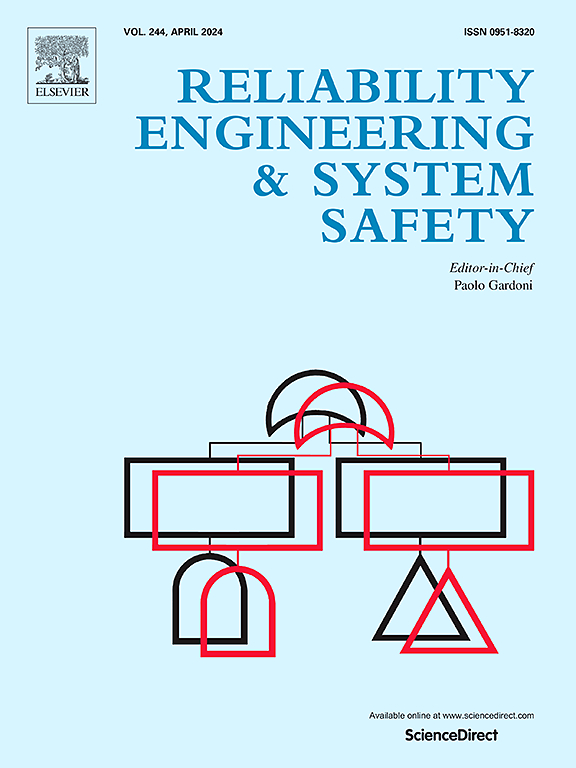A sequential diagnostic strategy generation transformation method for large-scale systems based on multi-signal flow graph model and multi-objective optimization
IF 9.4
1区 工程技术
Q1 ENGINEERING, INDUSTRIAL
引用次数: 0
Abstract
The multi-signal flow graph model is widely used in sequential fault diagnosis of complex systems due to its low modeling difficulty and fast diagnostic speed. Based on this model, testers can obtain a strategy to guide the diagnosis by solving the optimal sequential strategy generation problem (OSP). As system complexity increases, diagnostic requirements for various costs are increasingly highlighted, and the optimization problem also evolves from small-scale single-objective OSP to large-scale multi-objective OSP (LM-OSP). However, due to the complexity of the objective space and the Markov property of decision variables, LM-OSP is challenging to solve with conventional algorithms. To address this, this paper transforms the original LM-OSP into a more tractable designated region mapping problem (DRMP) and solves it with swarm intelligence search algorithms (SISAs) for better solutions. First, distributions are approximated to make the objective space continuous. Second, the decision space is linearized by converting the spatial data structure. Based on the continuity and linearization, the transformed DRMP is established, and basic steps for applying any SISA are determined. Finally, strategies with a comprehensive 8∼10-fold diagnostic performance improvement can be achieved in simulation and real case experiments.

求助全文
约1分钟内获得全文
求助全文
来源期刊

Reliability Engineering & System Safety
管理科学-工程:工业
CiteScore
15.20
自引率
39.50%
发文量
621
审稿时长
67 days
期刊介绍:
Elsevier publishes Reliability Engineering & System Safety in association with the European Safety and Reliability Association and the Safety Engineering and Risk Analysis Division. The international journal is devoted to developing and applying methods to enhance the safety and reliability of complex technological systems, like nuclear power plants, chemical plants, hazardous waste facilities, space systems, offshore and maritime systems, transportation systems, constructed infrastructure, and manufacturing plants. The journal normally publishes only articles that involve the analysis of substantive problems related to the reliability of complex systems or present techniques and/or theoretical results that have a discernable relationship to the solution of such problems. An important aim is to balance academic material and practical applications.
 求助内容:
求助内容: 应助结果提醒方式:
应助结果提醒方式:


